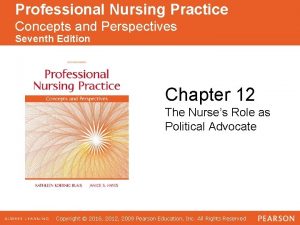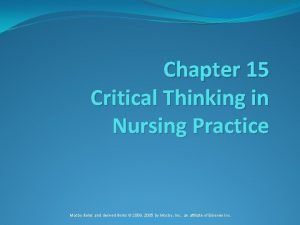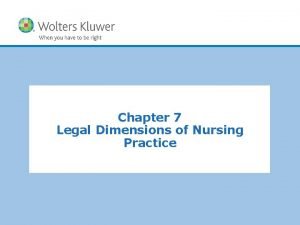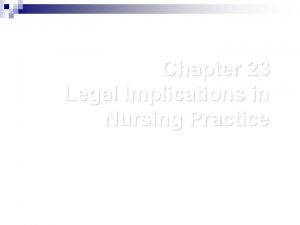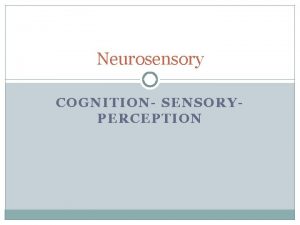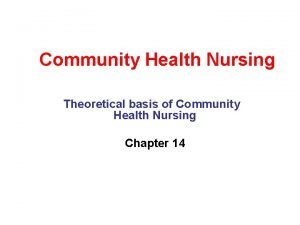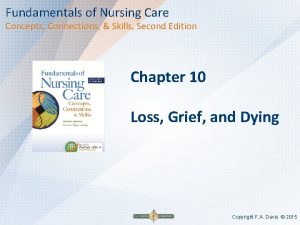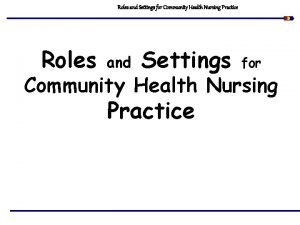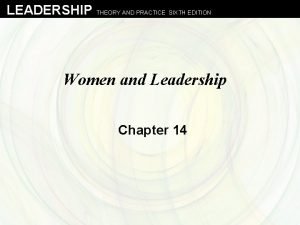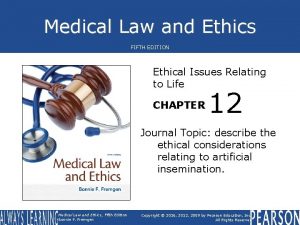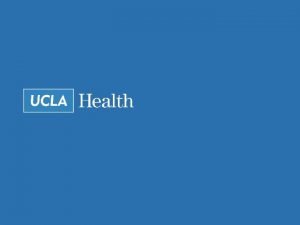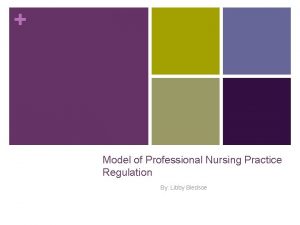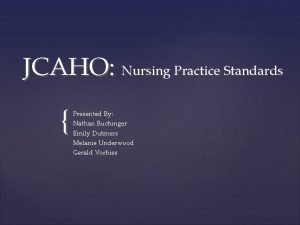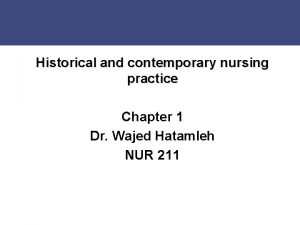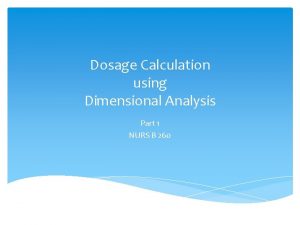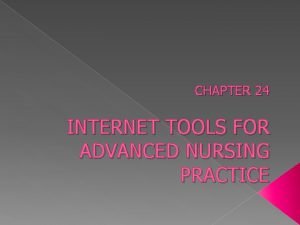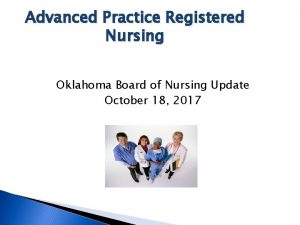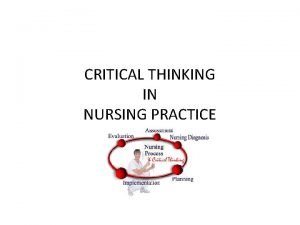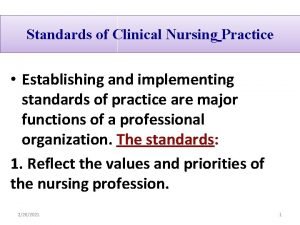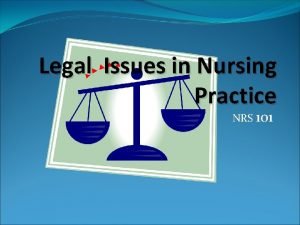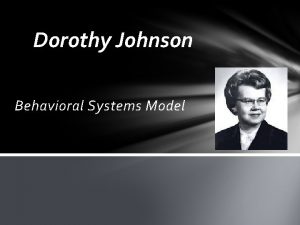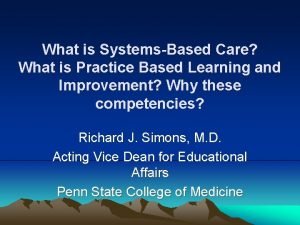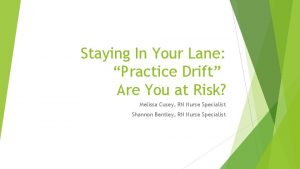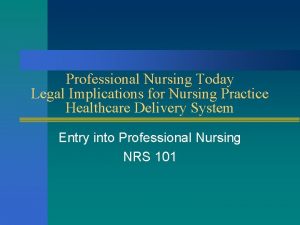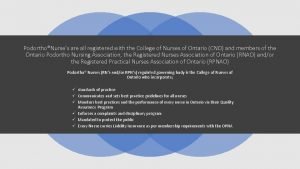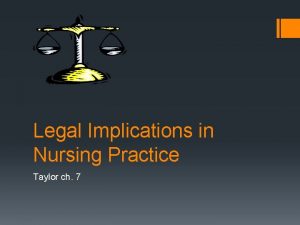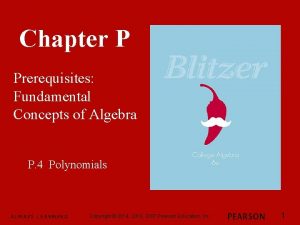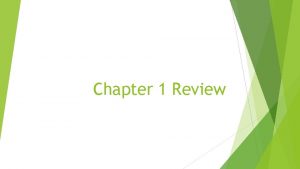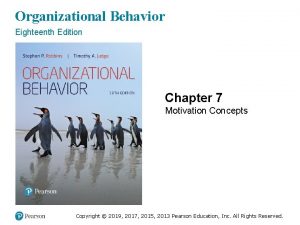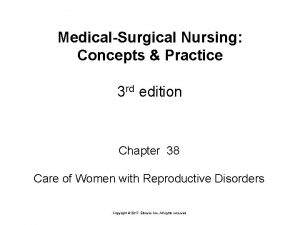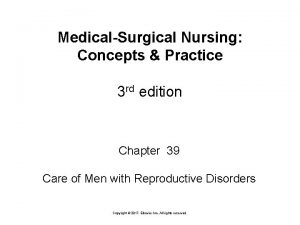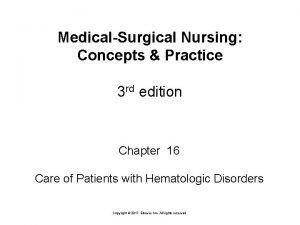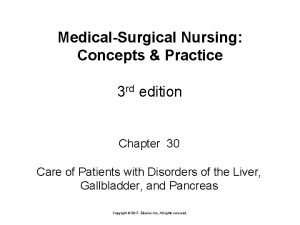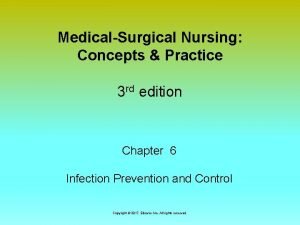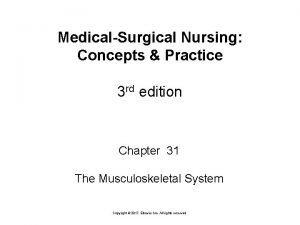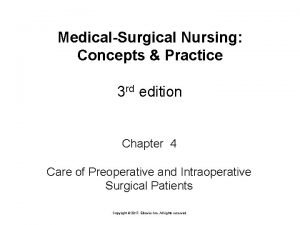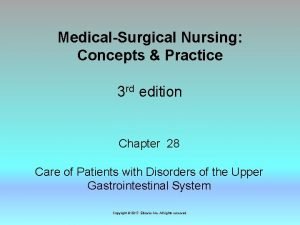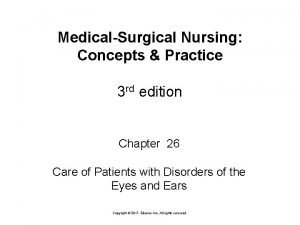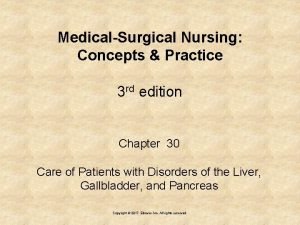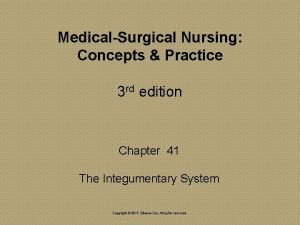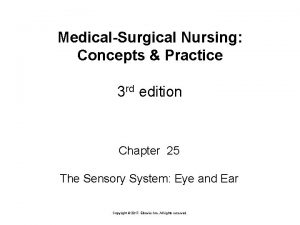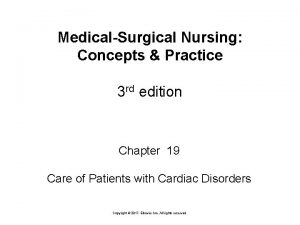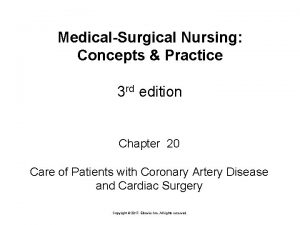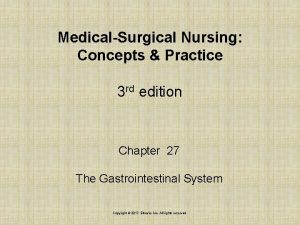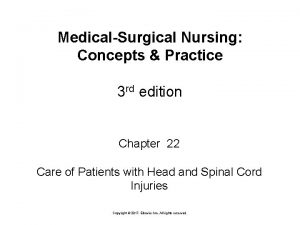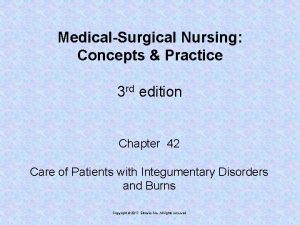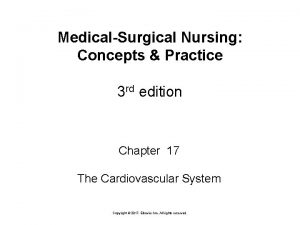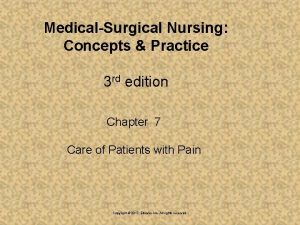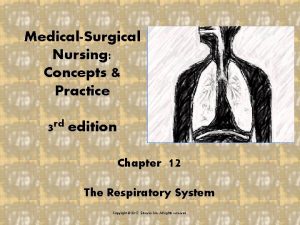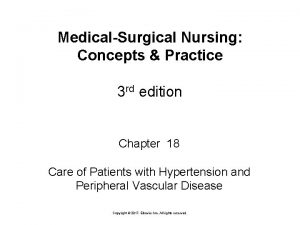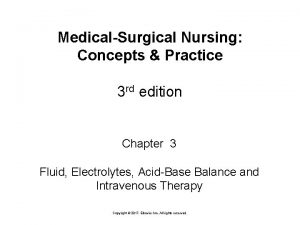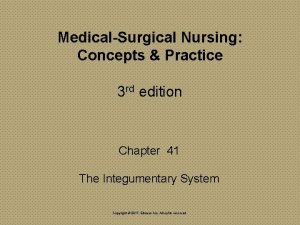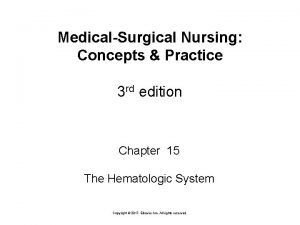MedicalSurgical Nursing Concepts Practice 3 rd edition Chapter






































































- Slides: 70

Medical-Surgical Nursing: Concepts & Practice 3 rd edition Chapter 14 Care of Patients with Disorders of the Lower Respiratory System Copyright © 2017, Elsevier Inc. All rights reserved.

Theory Objectives Compare and contrast commonalities and differences in nursing care for patients with bronchitis, influenza, pneumonia, empyema, and pleurisy. List nursing interventions appropriate for care of patients with nursing diagnoses of Ineffective airway clearance, Ineffective breathing pattern, Impaired gas exchange, and Fatigue related to hypoxia. Copyright © 2017, Elsevier Inc. All rights reserved. 2

Theory Objectives (Cont. ) Analyze ways a nurse can contribute to prevention and prompt treatment of tuberculosis (TB). Summarize the pathophysiologic changes that occur during an asthma attack. Copyright © 2017, Elsevier Inc. All rights reserved. 3

Theory Objectives (Cont. ) Evaluate problems that occur with aging that may cause a restrictive pulmonary disorder. Describe the specifics of nursing care for the patient who has had thoracic surgery and has chest tubes in place. Copyright © 2017, Elsevier Inc. All rights reserved. 4

Clinical Practice Objectives Complete a nursing care plan, including home care, for the patient with chronic obstructive pulmonary disease. Review nursing interventions for the tracheostomy patient on oxygen therapy. Teach a patient how to use a peak flowmeter. Observe a respiratory therapist (RT) who is responsible for a patient on a mechanical ventilator and identify how RTs and nurses work together to deliver safe care. Copyright © 2017, Elsevier Inc. All rights reserved. 5

Acute Bronchitis An extension of an upper respiratory infection involving the trachea Usually viral in origin Early symptoms are similar to those of the common cold. Treatment includes humidification with warm or cool moist air, cough mixtures, or bronchodilators. Copyright © 2017, Elsevier Inc. All rights reserved. 6

Influenza An acute, highly infectious disease of the upper and lower respiratory tracts. Caused by three major types (A, B, and C) and numerous subtypes Spread by direct and indirect contact Copyright © 2017, Elsevier Inc. All rights reserved. 7

Signs and Symptoms Appear 2 to 3 days after exposure Headache, fever, chills, and muscle aches Sore throat, hacking cough, runny nose, and nasal congestion Copyright © 2017, Elsevier Inc. All rights reserved. 8

Treatment and Nursing Management Antiviral medications may be used in specific patient populations. Uncomplicated influenza usually is managed more effectively by nursing intervention than by drugs or other forms of medical treatment. Copyright © 2017, Elsevier Inc. All rights reserved. 9

Health Promotion: Immunization The Advisory Committee on Immunization Practices (2009) recommends annual influenza vaccination for Ø People at high risk for influenza-related complications and severe disease, including children ages 6 to 59 months, pregnant women, people older than 50 years, and people of any age with certain chronic medical conditions People who live with or care for persons at high risk, including household contacts who have frequent contact with people at high risk and who can transmit influenza to those individuals, and health care workers Copyright © 2017, Elsevier Inc. All rights reserved. 10

Complementary and Alternative Therapy for the “Flu” Elderberry juice has been used for centuries as a treatment to ease symptoms of the flu, colds, and sinus infections. Seems to prevent the virus from attaching to cells Antioxidants in the purple elderberry fruit have an anti-inflammatory effect comparable to aspirin. May explain why the juice produces symptom improvement Copyright © 2017, Elsevier Inc. All rights reserved. 11

Pneumonia An extensive inflammation of the lung with either consolidation of the lung tissue as it fills with exudate or interstitial inflammation and edema. Bacteria or viruses may cause pneumonia. Also can result from inhalation of irritating gases Copyright © 2017, Elsevier Inc. All rights reserved. 12

Signs, Symptoms, and Diagnosis Usually a high fever accompanied by chills A cough that produces rusty or blood-flecked sputum Sweating and chest pain that is made worse by respiratory movement A general feeling of malaise and aching muscles Diagnosis is confirmed by chest radiography, which reveals densities in the affected lung. Copyright © 2017, Elsevier Inc. All rights reserved. 13

Complementary and Alternative Therapy for Pneumonia Barberry root bark is used against bacteria, fungi, and viruses as well as other organisms and is an alternative treatment for pneumonia. It has antimicrobial action against both grampositive and gram-negative bacteria. It should not be used during pregnancy because it can cause spontaneous abortion. Copyright © 2017, Elsevier Inc. All rights reserved. 14

Cultural Considerations: Pneumococcal Vaccine Routine use of pneumococcal polysaccharide vaccine is not recommended for persons of Alaskan Native or American Indian heritage unless they have underlying medical conditions such as chronic lung, liver, or renal disease. Local public health authorities may consider recommending the vaccine for occurrences of increased risk. Copyright © 2017, Elsevier Inc. All rights reserved. 15

Nursing Management of Pneumonia Promote oxygenation. Control elevated temperature. Maintain nutritional and fluid intake. Provide adequate rest. Monitor vital signs and respiratory status. Relieve pain and discomfort. Provide good oral hygiene. Prevent irritation of the lungs by smoke and other irritants. Avoid secondary bacterial infections. Copyright © 2017, Elsevier Inc. All rights reserved. 16

Clinical Cues The first signs of decreasing oxygenation may be restlessness or confusion. The patient may want to sit upright to allow for better chest excursion. The respiratory rate will increase, and later there will be flaring of the nares and then retraction of respiratory muscles if the condition worsens. Cyanosis is a very late sign. Copyright © 2017, Elsevier Inc. All rights reserved. 17

Older Adult Care Points Older adults are more at risk for influenza and pneumonia because of a less efficient immune system, decreased action of cilia, and decreased elasticity and muscle tone. Confusion often is the most obvious sign of atypical pneumonia in older adults. It may take 6 to 12 weeks after a bout of pneumonia for the older person to be able to resume normal activities without undue fatigue. Copyright © 2017, Elsevier Inc. All rights reserved. 18

Older Adult Care Points (Cont. ) Very old patients may never quite regain the former level of wellness after a serious episode of pneumonia. Teach older adults to seek medical attention quickly if symptoms of pneumonia occur. Copyright © 2017, Elsevier Inc. All rights reserved. 19

Empyema occurs when the fluid within the pleural cavity becomes infected and the exudate becomes thick and purulent. The organisms causing the infection may be staphylococci or streptococci. Copyright © 2017, Elsevier Inc. All rights reserved. 20

Atelectasis An incomplete expansion, or collapse, of alveoli May occur from compression of the lungs from outside, a decrease in surfactant, or bronchial obstruction Breath sounds are diminished when the airways are collapsed, and oxygen saturation (Sa. O 2) will decrease. Treatment consists of expelling secretions by coughing. Copyright © 2017, Elsevier Inc. All rights reserved. 21

Fungal Infections Fungal infections are caused by the inhalation of the fungus or spores or by overgrowth of organisms found normally in the body. The most common fungal lung infections are coccidioidomycosis and histoplasmosis. Copyright © 2017, Elsevier Inc. All rights reserved. 22

Tuberculosis TB is an infectious disease of the lung characterized by lesions within the lung tissue. The lesions may continue to degenerate and become necrotic, or they may heal by fibrosis and calcification. The causative organism is the true tubercle bacillus Mycobacterium tuberculosis. Copyright © 2017, Elsevier Inc. All rights reserved. 23

Extrapulmonary Tuberculosis Areas most frequently affected are the bones, meninges, urinary system, and reproductive system. TB of the spine, called Pott’s disease, is now quite rare in the United States. The deformity most commonly seen in Pott’s disease is kyphosis, or “hunchback. ” Copyright © 2017, Elsevier Inc. All rights reserved. 24

Signs and Symptoms Cough, low-grade fever in the afternoon, anorexia, loss of weight, fatigue, night sweats, and sometimes hemoptysis Tight or dull chest pain and mucopurulent sputum may occur as the disease progresses. Copyright © 2017, Elsevier Inc. All rights reserved. 25

Diagnosis Tuberculin skin testing Blood testing Radiographic examinations and sputum cultures Copyright © 2017, Elsevier Inc. All rights reserved. 26

Treatment of active TB consists of at least four drugs for an extended period of time. Copyright © 2017, Elsevier Inc. All rights reserved. 27

Bronchiectasis Chronic respiratory disorder in which one or more bronchi are permanently dilated Thought to occur as a result of frequent respiratory infections in childhood Copyright © 2017, Elsevier Inc. All rights reserved. 28

Cystic Fibrosis A genetic disease in which there is excessive mucus production because of exocrine gland dysfunction It occurs most often in whites. The lungs, intestines, sinuses, reproductive tract, sweat glands, and pancreas are all affected. It is diagnosed by history, physical examination, and a positive sweat test result. Copyright © 2017, Elsevier Inc. All rights reserved. 29

Occupational Lung Disorders Coal dust; dust from hemp, flax, and cotton processing; and exposure to silica in the air all can cause work-related lung disorders. Asbestos exposure may cause a rare cancer of the chest lining called mesothelioma. Copyright © 2017, Elsevier Inc. All rights reserved. 30

Sarcoidosis A lung disease characterized by granulomas It causes fibrotic changes in the lung tissue over time, and the cause is unknown. It affects other tissues in the body as well. A cellular immune response seems to be responsible for the tissue changes. Copyright © 2017, Elsevier Inc. All rights reserved. 31

Pulmonary Fibrosis Occurs from severe infection, repeated infection, or inflammation that causes scarring of the lung tissue The scarring decreases functional lung tissue. Copyright © 2017, Elsevier Inc. All rights reserved. 32

Tuberculosis Diagnosis Ø Ø Tuberculin skin testing Radiographs and sputum cultures Copyright © 2017, Elsevier Inc. All rights reserved. 33

Latent Tuberculosis Infection Latent TB infection (LTBI) is the current terminology for an infection with Mycobacterium tuberculosis but no current active disease. LTBI may develop into active TB if the immune system is weakened by a serious illness such as HIV or when the system is less efficient, as with advanced age. Copyright © 2017, Elsevier Inc. All rights reserved. 34

Cultural Considerations American Indian, Alaska Natives, Asian/Pacific Islanders, black non-Hispanics, and Hispanics have a high incidence of TB. The disease is most prevalent in people older than 65 years of age in these groups. For the first few years of residence in the United States, new immigrants from areas where TB is prevalent have incidence rates similar to those of their former countries. Copyright © 2017, Elsevier Inc. All rights reserved. 35

Directly Observed Therapy Because of an increase in the incidence of multidrugresistant TB, directly observed therapy (DOT) is recommended for patients who are known to be at risk of noncompliance with therapy. Ø Ø Ø Visual observation of the ingestion of each required dose of medication for the entire course of treatment Often a public health nurse administers the medication at a clinic site. Follow-up visits are necessary for 12 months after completion of therapy to monitor for the presence of resistant strains. Copyright © 2017, Elsevier Inc. All rights reserved. 36

Complementary and Alternative Therapy for Tuberculosis Vitamin D has been found to be successful in the prevention and treatment of TB. White blood cells convert vitamin D into an active form that helps make a protein that kills TB bacteria. Perhaps this is why moving to a sunny climate and a solarium environment helped people with TB years ago. Copyright © 2017, Elsevier Inc. All rights reserved. 37

Nursing Management of Tuberculosis Nursing diagnoses Ø Ø Ineffective breathing pattern related to decreased lung capacity Noncompliance related to lack of knowledge of disease process and long-term requirements for treatment Activity intolerance related to fatigue, febrile status, and poor nutritional status Imbalanced nutrition: less than body requirements related to anorexia, fatigue, and productive cough Copyright © 2017, Elsevier Inc. All rights reserved. 38

Nursing Management of Tuberculosis (Cont. ) Control infection. Promote immunity. Support. Copyright © 2017, Elsevier Inc. All rights reserved. 39

Restrictive Pulmonary Disorders Caused by decreased elasticity or compliance of the lungs or decreased ability of the chest wall to expand Disorders of the central nervous system or of the neuromuscular system can cause a restrictive lung disorder. Copyright © 2017, Elsevier Inc. All rights reserved. 40

Restrictive Pulmonary Disorders (Cont. ) Myasthenia gravis and arthritis are examples of extrapulmonary causes of a restrictive disorder Kyphosis of the spine or severe scoliosis may also hamper lung expansion, although in these muscular and skeletal disorders, the lung tissue remains normal. Copyright © 2017, Elsevier Inc. All rights reserved. 41

Pleurisy An inflammation of the pleura TB, pneumonia, neoplasm, and pulmonary infarction all can cause pleurisy. Pleurisy pain is sharp and abrupt in onset and is most evident on inspiration. Pain causes shallow breathing. Pleural friction rub may sometimes be heard. Copyright © 2017, Elsevier Inc. All rights reserved. 42

Pleural Effusion A collection of fluid in the pleural space Transudative Ø Ø Ø Occurs in noninflammatory conditions Often a result of congestive heart failure, chronic liver failure, or renal disease Transudate is a thin fluid containing no protein that passes from cells into interstitial spaces or through a membrane. Copyright © 2017, Elsevier Inc. All rights reserved. 43

Pleural Effusion (Cont. ) Exudative Ø Ø Ø Thicker, contains cells and other substances, and is slowly discharged from cells into a body space or to the outside of the body. Exudative pleural effusion occurs in an area of inflammation caused by the increased capillary permeability characteristic of the inflammatory reaction. Occurs with lung cancer, pulmonary embolism, pancreatic disease, and pulmonary infections Copyright © 2017, Elsevier Inc. All rights reserved. 44

Obstructive Pulmonary Disorders Characterized by problems with moving air into and out of the lungs Ø Ø Ø Narrowing of the openings in the tracheobronchial tree increases resistance to the flow of air, making it difficult for oxygen to enter, and contributes to air trapping because exhalation also is difficult. Chronic bronchitis Asthma Emphysema Atelectasis Copyright © 2017, Elsevier Inc. All rights reserved. 45

Chronic Obstructive Pulmonary Disease Etiology and diagnosis Ø Ø Emphysema Chronic bronchitis Treatment Ø Ø Ø Bronchodilators and anti-inflammatory agents Smoking cessation Respiratory rehabilitation programs Nutrition Complementary and alternative therapies Copyright © 2017, Elsevier Inc. All rights reserved. 46

Complementary and Alternative Therapy for Emphysema Ginger and cinnamon are aromatic digestives that provide benefit for emphysema patients. Very small doses of Capsicum annum (chili) or garlic can be useful as mucolytic agents. Copyright © 2017, Elsevier Inc. All rights reserved. 47

Complications of Chronic Obstructive Pulmonary Disease Cor pulmonale Acute respiratory failure Peptic ulcer and gastroesophageal reflux disease Spontaneous pneumothorax Copyright © 2017, Elsevier Inc. All rights reserved. 48

Asthma Nursing management Ø Ø Ø Smoking cessation Psychosocial care Patient and family teaching Copyright © 2017, Elsevier Inc. All rights reserved. 49

Goals of Medical Treatment Minimize irritation of the air passages and relieve obstruction by secretions, edema, or bronchospasm. Prevent or control infection and allergy. Increase the patient’s tolerance for activity. Determine the best drug combination in the least amount that will control symptoms. Copyright © 2017, Elsevier Inc. All rights reserved. 50

Peak Flowmeter The peak flowmeter helps determine the drug dosage needed to control the asthma, predict the effectiveness of therapy, and detect airflow obstruction buildup before it becomes serious and requires hospitalization. Copyright © 2017, Elsevier Inc. All rights reserved. 51

Patient Teaching Know your “green zone” (when airflow is normal), your “yellow zone” (when usual airflow has decreased and routine medications should be increased), and your “red zone” (when you need to use rescue medications and call your health care provider). Copyright © 2017, Elsevier Inc. All rights reserved. 52

The Step System of Asthma Treatment I. Mild intermittent II. Mild persistent III. Moderate persistent IVa. Severe persistent IVb. Severe persistent, not responsive to the previous step Copyright © 2017, Elsevier Inc. All rights reserved. 53

Audience Response Question 1 On initial admission assessment of a patient with acute exacerbation of chronic obstructive pulmonary disease (COPD), the nurse is likely to expect which sign(s) and symptom(s)? (Select all that apply. ) 1. 2. 3. 4. 5. Tensing of the shoulder muscles Inability to tolerate sitting up Flaring of the nostrils Completes sentences with no effort Sternal retraction Copyright © 2017, Elsevier Inc. All rights reserved. 54

Respiratory Distress Apply high-flow oxygen and monitor the saturation level with a pulse oximeter. Observe and monitor continuously. Immediately alert the RN and the physician. If there is a history of COPD, the oxygen rate should be changed, as ordered, to a lower flow of 1 to 3 L per nasal cannula after the respiratory crisis has been resolved. Copyright © 2017, Elsevier Inc. All rights reserved. 55

Lung Cancer Etiology and pathophysiology Signs and symptoms Diagnosis Treatment Ø Ø Ø Surgery Chemotherapy Radiation therapy Copyright © 2017, Elsevier Inc. All rights reserved. 56

Pulmonary Vascular Disorders Pulmonary embolism Primary pulmonary hypertension Lung transplantation Copyright © 2017, Elsevier Inc. All rights reserved. 57

Chest Injuries Fractured ribs Flail chest Penetrating wounds Pneumothorax and hemothorax Ø Ø Spontaneous pneumothorax Tension pneumothorax Copyright © 2017, Elsevier Inc. All rights reserved. 58

Major Concerns for Patients with Chest Injuries Maintenance of an airway Assurance of adequate ventilation Treatment of circulatory problems to ensure circulation of oxygenated blood Copyright © 2017, Elsevier Inc. All rights reserved. 59

Lung Disorders Pulmonary edema Adult (acute) respiratory distress syndrome Respiratory failure Copyright © 2017, Elsevier Inc. All rights reserved. 60

Common Therapeutic Measures Intrathoracic surgery Ø Ø Preoperative care Postoperative care Medication administration Humidification Pulmonary hygiene Oxygen therapy Copyright © 2017, Elsevier Inc. All rights reserved. 61

Chest Tubes and Closed Drainage Purposes Ø Ø Major assessments Ø Ø Provide for drainage of air and blood from within the pleural cavity. Allow for gradual re-expansion of the lung. The respiratory status of the patient The site at which the tube is inserted into the chest and the length of the tube (for kinks) The amount and character of the drainage in the collection chamber Copyright © 2017, Elsevier Inc. All rights reserved. 62

Location of Sites for Insertion of Chest Tubes Copyright © 2017, Elsevier Inc. All rights reserved. 63

Disposable Water-Seal Drainage System From Harkreader H, Hogan MA: Fundamentals of nursing: caring and clinical judgment, ed. 2, Philadelphia, 2004, Saunders. Copyright © 2017, Elsevier Inc. All rights reserved. 64

Various Oxygen Delivery Devices From de. Wit SC, O’Neill P: Fundamental concepts and skills for nursing, ed. 4, St. Louis, 2013, Saunders. Copyright © 2017, Elsevier Inc. All rights reserved. 65

Mechanical Ventilation Modes of ventilation Pressure support ventilation Continuous positive airway pressure Noninvasive positive ventilation Copyright © 2017, Elsevier Inc. All rights reserved. 66

Dangers of Mechanical Ventilation Barotrauma Oxygen toxicity Impaired cardiac output Infection Fluid retention Gastric distention Gastrointestinal bleeding Copyright © 2017, Elsevier Inc. All rights reserved. 67

Preventing Ventilator-Acquired Pneumonia The Centers for Disease Control and Prevention recommends Ø Ø Ø Elevation of the head of the bed to 30 to 45 degrees Continuous removal of subglottic secretions Change of ventilator circuit no more often than every 48 hours and washing hands before and after contact with every patient Copyright © 2017, Elsevier Inc. All rights reserved. 68

Preventing Ventilator-Acquired Pneumonia (Cont. ) In addition, facility bundle policy may include Ø Ø Checking the residual volume in the nasogastric tube Providing oral care with chlorhexidine Deep vein thrombosis prophylaxis Peptic ulcer prophylaxis Copyright © 2017, Elsevier Inc. All rights reserved. 69

Mechanical Ventilation When caring for a patient on mechanical ventilation, the nurse should Ø Ø Ø Check the physician’s order each shift and then check the ventilator for the proper settings. Check alarms to see that they are turned on. Keep tubing clear of pooled water; empty the water into an appropriate receptacle as needed. Copyright © 2017, Elsevier Inc. All rights reserved. 70
 Health promotion in nursing practice 7th edition
Health promotion in nursing practice 7th edition Political astuteness in nursing
Political astuteness in nursing Introduction to genetic analysis tenth edition
Introduction to genetic analysis tenth edition Operating system
Operating system Operating system concepts 6th edition
Operating system concepts 6th edition Database system concepts seventh edition
Database system concepts seventh edition Kariogram človeka
Kariogram človeka Using mis (10th edition) 10th edition
Using mis (10th edition) 10th edition Using mis (10th edition) 10th edition
Using mis (10th edition) 10th edition Kataoka-yahiro and saylor's model
Kataoka-yahiro and saylor's model Dimensions of nursing practice
Dimensions of nursing practice Chapter 23 legal implications in nursing practice
Chapter 23 legal implications in nursing practice Cost-benefit analysis concepts and practice
Cost-benefit analysis concepts and practice Interrelated concepts nursing
Interrelated concepts nursing Principles of public health nursing
Principles of public health nursing Fundamentals of nursing care concepts connections & skills
Fundamentals of nursing care concepts connections & skills Roles of community health nurse
Roles of community health nurse Leadership theory and practice 6th edition
Leadership theory and practice 6th edition Computer security principles and practice 4th edition
Computer security principles and practice 4th edition Modern real estate practice in pennsylvania
Modern real estate practice in pennsylvania Ethical problems in the practice of law 5th edition
Ethical problems in the practice of law 5th edition Computer security principles and practice 4th edition
Computer security principles and practice 4th edition Dr ruth yates
Dr ruth yates Practice assessor feedback examples
Practice assessor feedback examples Unit practice council nursing ideas
Unit practice council nursing ideas Oncology nursing society putting evidence into practice
Oncology nursing society putting evidence into practice Model of professional nursing practice regulation
Model of professional nursing practice regulation Jcaho stands for
Jcaho stands for Contemporary nursing meaning
Contemporary nursing meaning How to calculate gtts/min
How to calculate gtts/min Internet tools for advanced nursing practice
Internet tools for advanced nursing practice Oklahoma board of nursing
Oklahoma board of nursing Neuman systems theory
Neuman systems theory Thinks critically and analyses nursing practice
Thinks critically and analyses nursing practice Standards of clinical nursing practice
Standards of clinical nursing practice Theoretical foundation of nursing test question
Theoretical foundation of nursing test question Legal issues in nursing practice
Legal issues in nursing practice Dorothy johnson theory application in nursing
Dorothy johnson theory application in nursing Translating research findings to clinical nursing practice
Translating research findings to clinical nursing practice Systems based practice
Systems based practice Virginia henderson's 14 components of nursing
Virginia henderson's 14 components of nursing Practice drift in nursing
Practice drift in nursing Maslow theory in nursing practice
Maslow theory in nursing practice Florida nursing laws
Florida nursing laws Trends and issues in nursing
Trends and issues in nursing Podortho nurse courses
Podortho nurse courses Legal implications in nursing practice
Legal implications in nursing practice Modular nursing example
Modular nursing example Nursing interventions for hoarding disorder
Nursing interventions for hoarding disorder Care plan of cataract
Care plan of cataract Nursing rationale examples
Nursing rationale examples Nursing process in psychiatric nursing
Nursing process in psychiatric nursing Chapter 17 promotional concepts and strategies answer key
Chapter 17 promotional concepts and strategies answer key Chapter 33 entrepreneurial concepts
Chapter 33 entrepreneurial concepts Chapter 15 developing fraction concepts
Chapter 15 developing fraction concepts A survey of probability concepts chapter 5 solutions
A survey of probability concepts chapter 5 solutions Contrast trade promotions and consumer sales promotions.
Contrast trade promotions and consumer sales promotions. The five basic concepts of democracy
The five basic concepts of democracy Prerequisites fundamental concepts of algebra
Prerequisites fundamental concepts of algebra Chapter p prerequisites fundamental concepts of algebra
Chapter p prerequisites fundamental concepts of algebra Chapter p prerequisites fundamental concepts of algebra
Chapter p prerequisites fundamental concepts of algebra 1. part one—analyzing accounting concepts and procedures
1. part one—analyzing accounting concepts and procedures Reviewing concepts and vocabulary chapter 1
Reviewing concepts and vocabulary chapter 1 Chapter 1 activity basic concepts
Chapter 1 activity basic concepts Criminal law and juvenile justice unit 2
Criminal law and juvenile justice unit 2 Chapter 7 organizational behavior
Chapter 7 organizational behavior Chapter r basic concepts of algebra answers
Chapter r basic concepts of algebra answers Sf4o lewis structure
Sf4o lewis structure Operating system concepts chapter 8 solutions
Operating system concepts chapter 8 solutions Operating system concepts chapter 5 solutions
Operating system concepts chapter 5 solutions Operating system concepts chapter 5 solutions
Operating system concepts chapter 5 solutions

